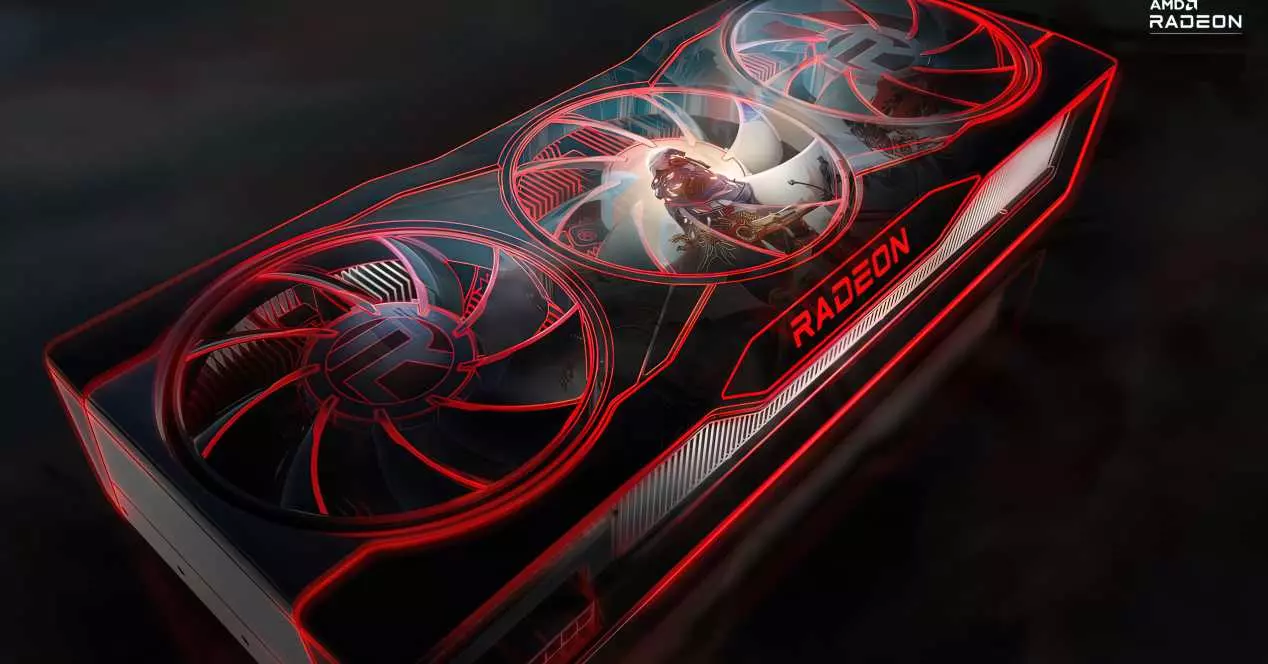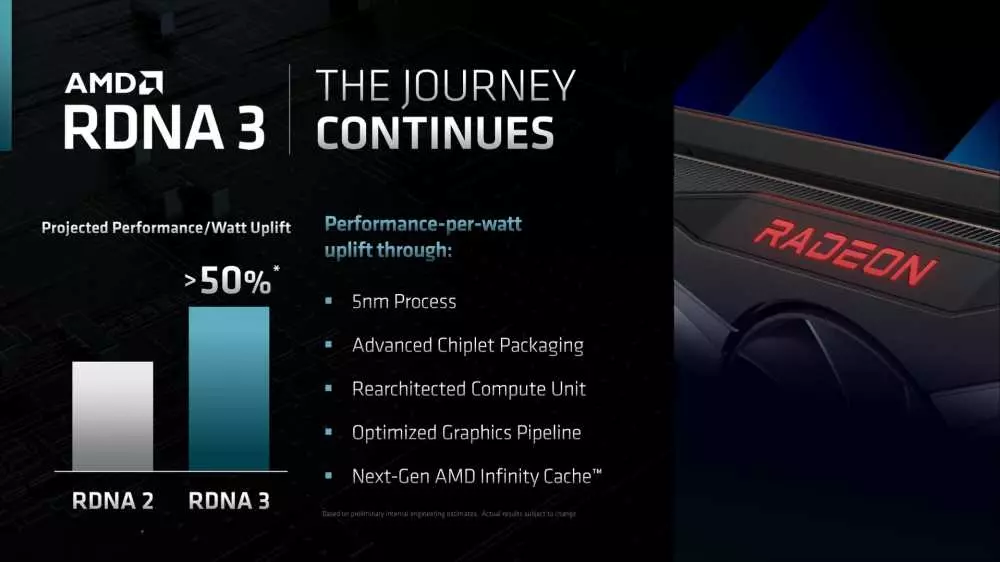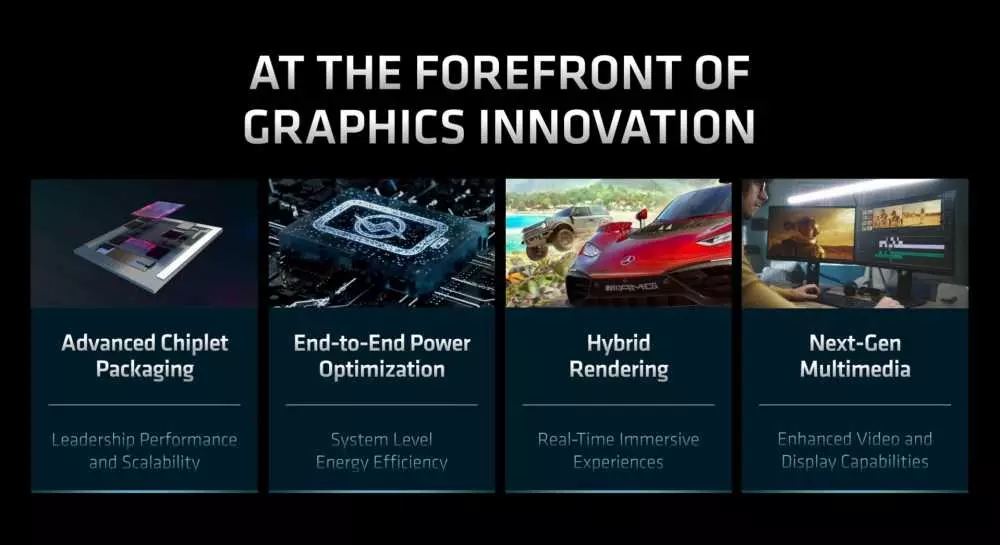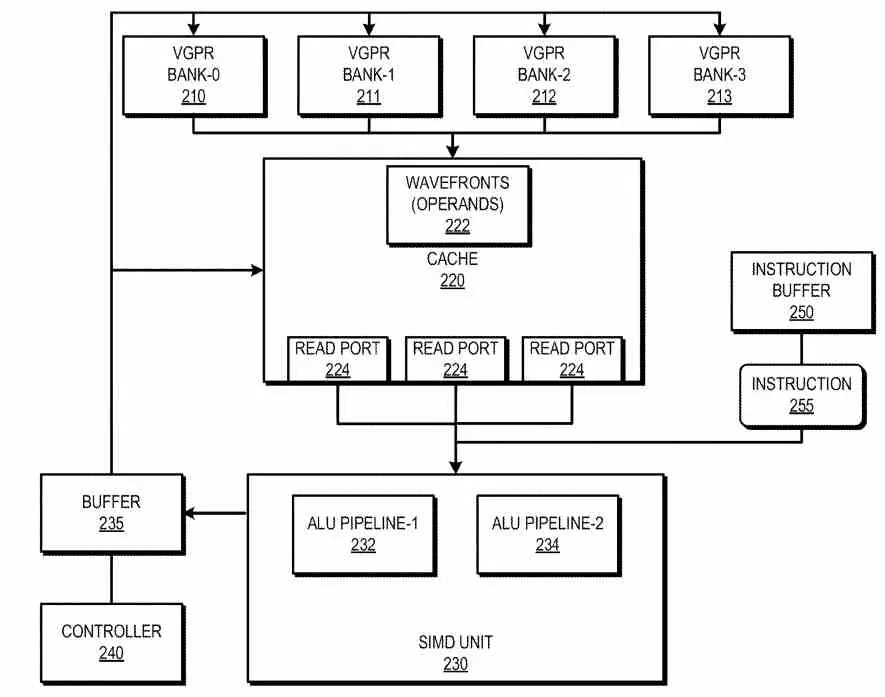
The biggest weakness of the RX 6000 compared to the RTX 30 is its performance in the face of Ray Tracing. It is simply to activate it in games and see how the differential increases in favor of NVIDIA cards. This has led AMD to make changes to the RDNA 3 architecture for Ray Tracing. So everything indicates that it will be the most benefited part of all for the next generation of the RX 7000.
One of the weak points that the RDNA architecture had in its beginnings, made up of the RX 5000 range, was its lack of units analogous to the NVIDIA RT Cores, which are responsible for executing two common tasks in Ray Tracing. The first of these is the calculation of the ray-object intersection, which occurs several billion times every second and consumes a large amount of resources. The second is the traversal of the data structure that represents the scene. AMD decided to go for a mixed solution. Where the intersection is calculated through its Ray Accelerator Units, but they do not calculate the data structure. A solution that in the end has not been the most efficient.
Changes in RDNA 3 Compute Units for Ray Tracing
In its last public conference for investors and shareholders, AMD made a quick preview of what we can see in the future RX 7000. Some changes were already known to us, such as the fact that some models in the range were disaggregated into several different chips, just like the desktop Ryzen, and the use of TSMC’s 5nm node. However, it is not the only change that we will see and it seems that AMD’s commitment to Ray Tracing in RDNA 3 will be more important than ever. Well, for what is the hybrid renderingwhich is what games use, combining the typical 3D pipeline rasterization with Ray Tracing for the calculation of indirect lighting totally or partially.


Let’s not forget that the Compute Units are the true core of the graphics chip as they have all the pieces to carry out the different steps of the cycle of each instruction and the fact that AMD officially says that it is going to change its organization is significant. The last time he did it was with the jump from the RX Vega to the RX 5000 and it was enough for him to start talking about a new architecture. Although the first thing we expect is a better Ray Accelerator Unit that it executes its task more efficiently and that it is at least at the level of those that exist in the RTX 30. And yes, the intersection units are found within each Compute Unit.
Double FLOPS per Compute Unit
The other improvement that is expected is to double the calculation capacity in floating point, in the same way that NVIDIA did in its RTX 30. The way to do it will be place twice as many units in 32-bit floating point compared to the previous generation. We do not know this officially through AMD marketing, but we do know from sufficiently official information such as its own patents and graphics drivers.
In both cases we have been able to learn that dual instructions can be sent to the Compute Units. So each SIMD unit within the Compute Unit and which encompasses the different 32-bit floating point unitss will go from 32 items in RDNA 2 to 64 items in RDNA 3. Said instructions or threads may be executed as 32 double instructions or 32-bit threads or 64 simple instructions or threads.




